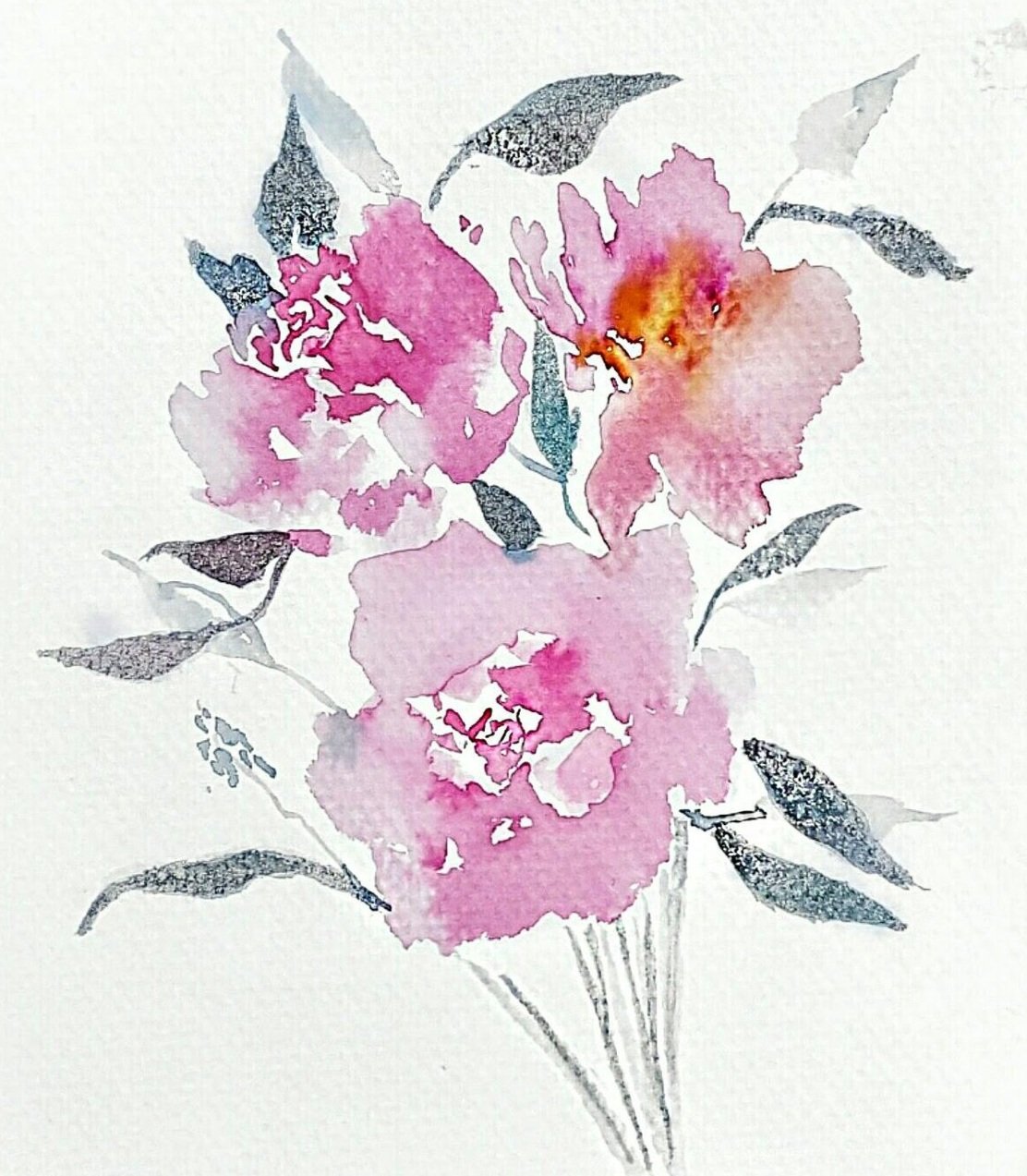Let it Flow; A Love Letter to Watercolor
and to Letting Go
Practicing watercolor feels like falling in love, it forces you to release control and teaches you to surrender. It works with its own rhythm, asks for trust, and reminds you that you can’t force beauty, you have to invite it.
It’s one of my favorite mediums. And maybe that’s because it has to be taken with a high sense of curiosity and surprises you with every step. You can read every decision, every hesitation, every breath on watercolor.
Dare to be brave, and you will be rewarded.
So if you’re here to learn about it, curious and maybe a little nervous… welcome.
First things first
Brushes
I tend to recommend at least three brushes: a small detail brush, a round brush, and a flat brush. What is most important is the bristles—they must be soft hair.
Each brush leaves different textures and patterns, and the only way to learn how to manage them is to practice. So get a piece of watercolor paper and experiment with shapes, traces, different water amounts, etc.
Watercolor Paper
Regular paper won’t do. You’ll need cold-press (textured) or hot-press (smooth) watercolor paper, 140 lb or thicker, so it doesn’t warp with water. The paper is part of the art—it holds the pigment, guides the flow, and becomes your background light. Canvas is another medium I enjoy using with watercolor.
Tip: We don’t paint the white—we preserve it. It’s better to leave areas of the paper untouched to create highlights. It’s like letting the painting breathe. There’s a poetic discipline in noticing when an area wishes to stay untouched.
Watercolors
You can begin with a basic watercolor set or tube paints. I personally love using the basic color wheel and mix colors to create new ones. That way you can start expanding your color theory knowledge.
A watercolor secret: shadows and darker tones are better made by adding touches of purples or blues—not black. Black tends to flatten things out unless you’re intentionally going for contrast or a graphic finish. And as for white? Leave that space alone. Let the paper sing.
Water & Mixing Palette
You’ll need a jar of clean water, and make sure you change it if it gets too dirty. A mixing palette (ceramic, plastic, or the lid of your set) helps you dilute and blend colors. This is where the magic of transparency and layering begins.
More Water, Less Control
The real technique? It’s emotional.
Watercolor isn’t about domination—it’s about partnership. The more water you use, the lighter and more transparent the color. The less water, the more intense. It’s a balance between control and chaos.
And when things go “wrong”—that’s usually where the art begins. A bleeding edge, a backflow, an accidental bloom? That’s character, that’s movement. That’s the muse playing.
Watercolor will ask you to pause. To let go. To let the water run its course and show you what it can do without your micromanagement.
From Blank Page to Bloom
Start with something easy. A flower, maybe. You will build the flower by layers, starting with the lightest shades with more water. Trace the general shape of the flower with a light tone, maybe even with only water. Try leaving a dry spot where the light is hitting one of its petals. Drop in a touch of deeper hue at the petal base. Watch it spread like blush.
Before it dries out, keep adding more layers of color to the brush in every layer, saturating the color more and more each time. Let it reveal itself. Try mixing a touch of purple to the mix where there’s shadow inside or underneath the petals.
Wait for it to be fully dry before you add any small detailed brushstrokes or complementary colors. Otherwise you will remember me later.
Leave the light where it belongs—untouched.
Final Strokes
Watercolor teaches you how to stay present. How to love your mistakes. How to loosen your grip, literally and metaphorically.
So dip your brush, wet your paper, and let the flow carry you.
You don’t need to be good. You just need to be curious.






